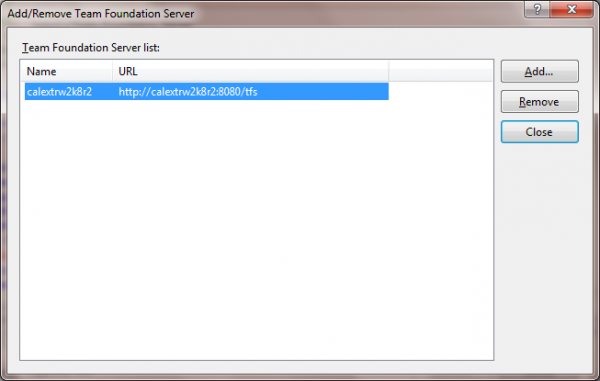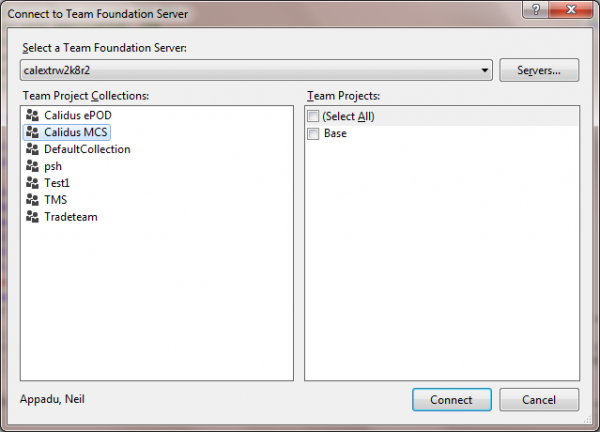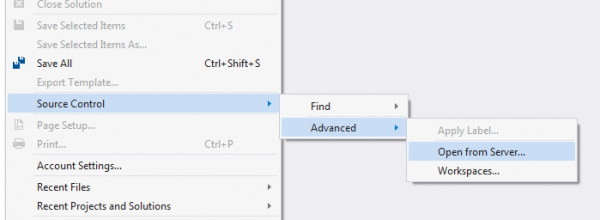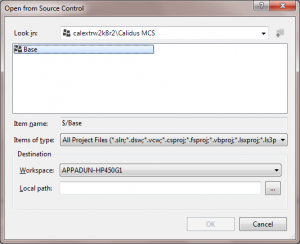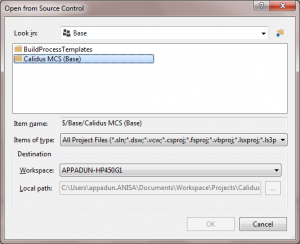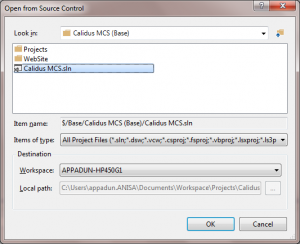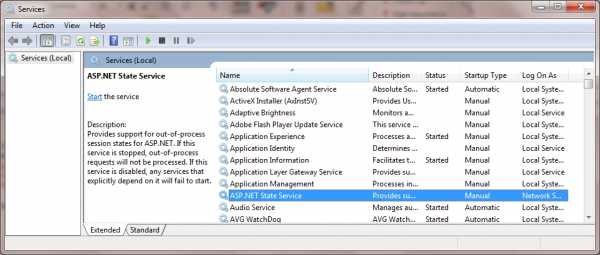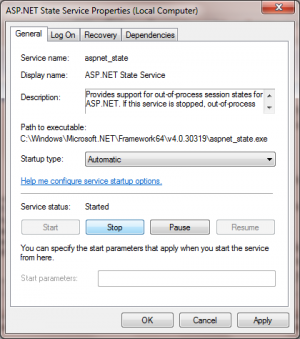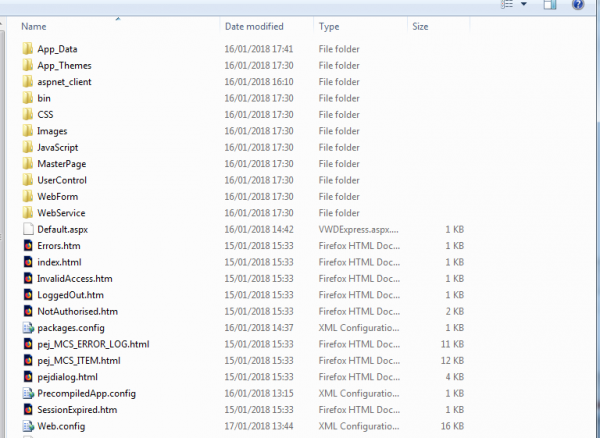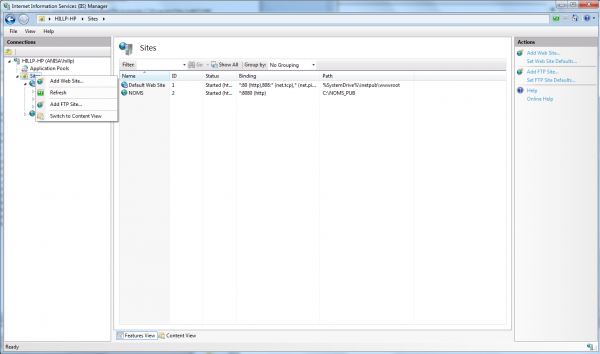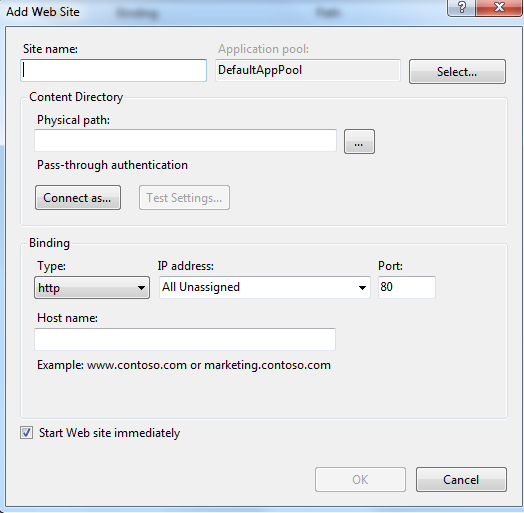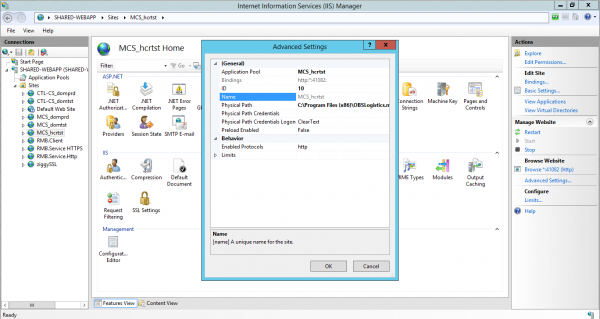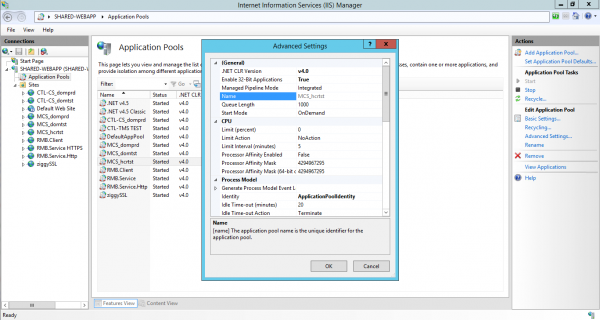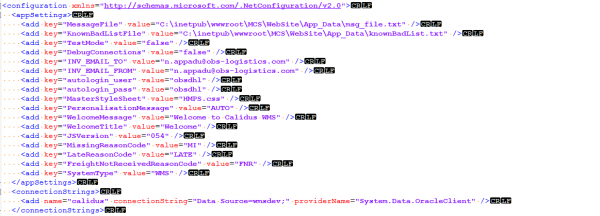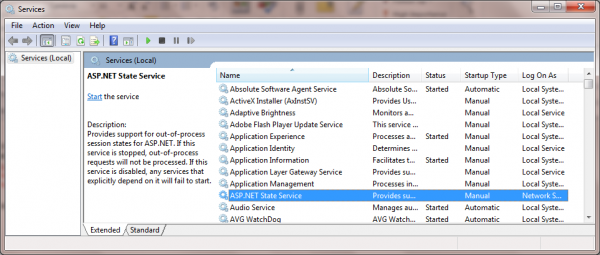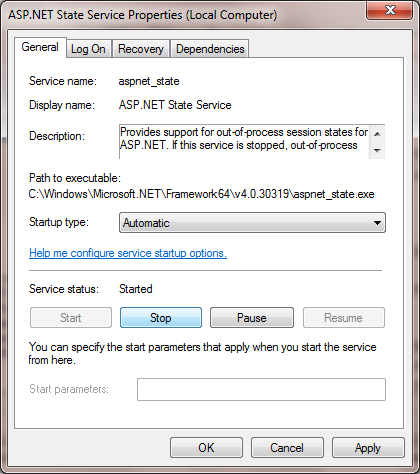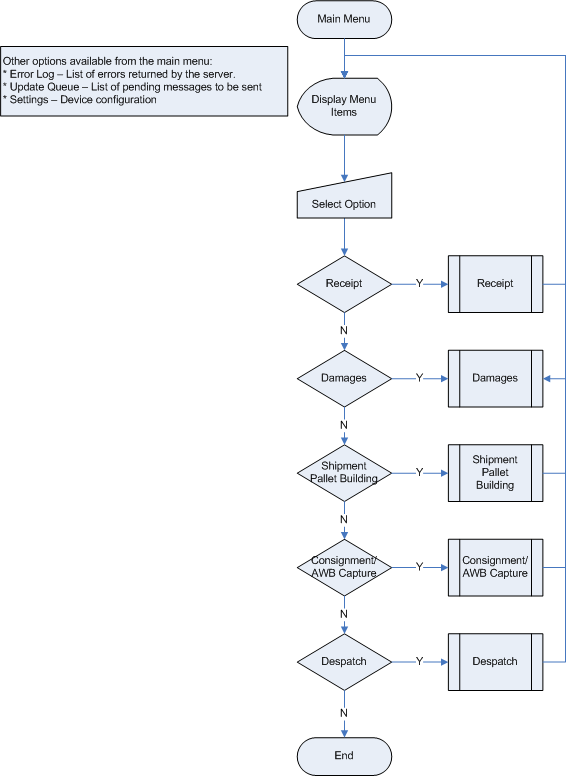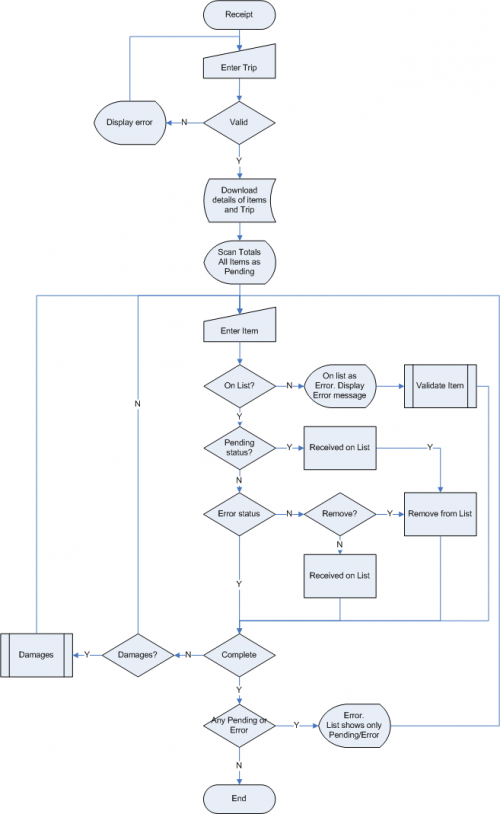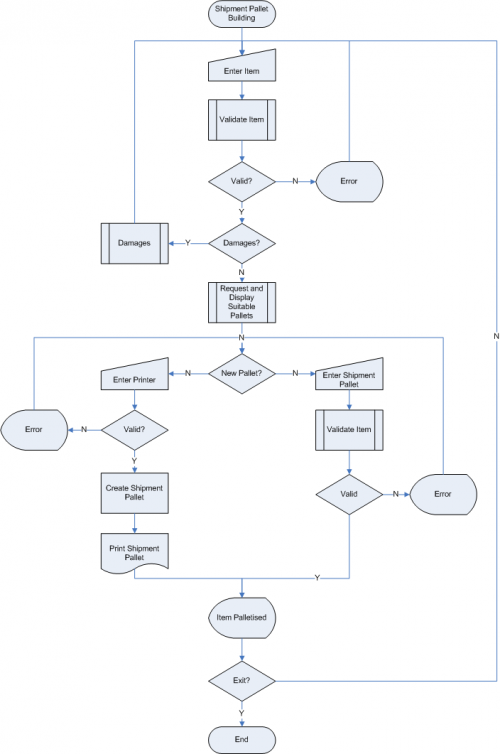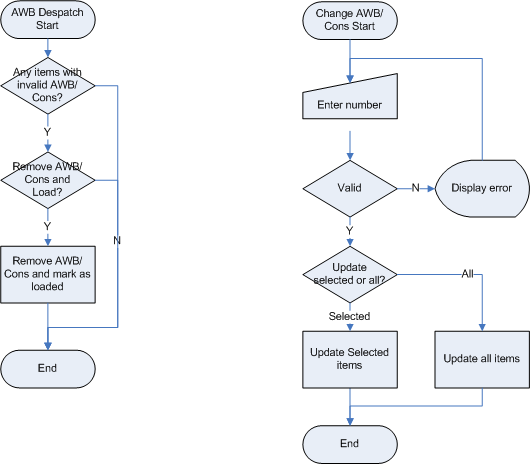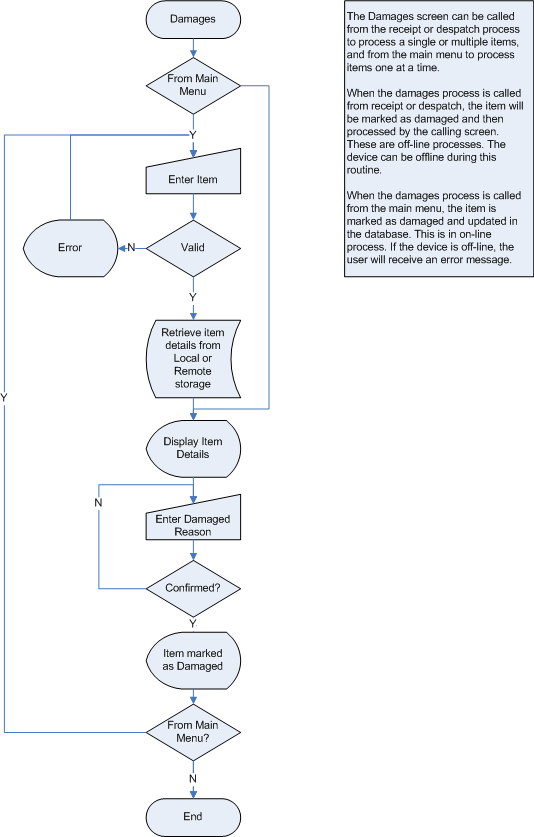OV 320722 CALIDUS MCS Technical Guide
![]()
Aptean
C-MCS Technical Guide
CALIDUS MCS
20th November 2019 - 1.0
Reference: FS 320722
Contents
Developer Guide
![]() Note: This is a developer guide.
Note: This is a developer guide.
Pre-Requisites
- Visual Studio 2017
- .NET Framework 4.7 Runtime
- Oracle Client 11.0.2 or 11.0.3
- Oracle ODT with ODAC 11.2.0.3
Installers are available here: See here:
- \\scansrv1\Global\OBS Logistics\Installs\ODTwithODAC112030.zip
- \\scansrv1\Global\OBS Logistics\Installs\win32_11gR2_client.zip
Oracle Set-up
Install the Oracle Client.
![]() Note: Ensure that the client is installed into a folder within the C:\app structure, for example:
Note: Ensure that the client is installed into a folder within the C:\app structure, for example:
C:\app\UserName\product\11.2.0\client_1
Install Oracle ODT into same base folder.
Set up TNS Names.
Code Set-up
![]() Note: You must be provided access to the correct source control library - contact your .NET development manager for details. The following instructions show an example - TFS settings may vary.
Note: You must be provided access to the correct source control library - contact your .NET development manager for details. The following instructions show an example - TFS settings may vary.
1) Copy \\spekefs2012\Projects\Development\MCS\# Source\Start\Calidus MCS to where you want your project setup locally. ![]() Note: This was correct at the time of document creation. There may be updated projects to copy, depending on the version - check the folder \\spekefs2012\Projects\Development\MCS\# Source for updated folders or zip files
Note: This was correct at the time of document creation. There may be updated projects to copy, depending on the version - check the folder \\spekefs2012\Projects\Development\MCS\# Source for updated folders or zip files
2) Startup Visual Studio.
3) Configure TFS server.
4) CALIDUS MCS source can be found underneath Calidus MCS.
5) Once that is setup, open the project from source control.
(You might need to specify a local path at this point – match it up to where you put you local copy of MCS earlier). The system will prompt if you should overwrite existing files – elect to overwrite.
6) Once that’s done, you should have access to all the code.
Project Set-up
7) Click on the CustomServerControls project and open References.
8) Remove OracleDataAccess.
9) Right-click on References and add reference to the installed Oracle.DataAccess.dll. This will be located within the Oracle home directory, usually here:
- a. C:\app\UserName\product\11.2.0\client_1\odp.net\bin\4\Oracle.DataAccess.dll
10) Repeat these steps for the DatabaseClassLibrary project.
11) Build the solution.
Runtime Set-up
12) Configure your web.config.
These 2 settings need to point to the files under App_Data.
<appSettings> <add key="MessageFile" value="C:\Users\appadun.ANISA\Documents\Workspace\Projects\Calidus MCS\WebSite\App_Data\msg_file.txt"/> <add key="KnownBadListFile" value="C:\Users\appadun.ANISA\Documents\Workspace\Projects\Calidus MCS\WebSite\App_Data\knownBadList.txt"/>
13) The application uses the ASP session state service to handle sessions. You’ll need to ensure that the session state service is enabled and started on your PC.
Advise that you change it to automatic startup if it is currently set to "Manual".
14) Run the app.
Server Installation
Info
Latest builds can be found in the following directory on the projects drive
P:\Development\MCS\Release Logs\Release
The release notes and change log can be found at the following location, it will be the developers responsibility to fill in these documents
P:\Development\MCS\Release Logs
LFS is currently the only client which uses MCS the QA box can be accessed from IP 172.151.45.173
Dependencies
- .NET Framework 4.7 Runtime
- Oracle Client 11.0.2 or 11.0.3
- Oracle ODT with ODAC 11.2.0.3
General Release Process
Copy the latest build zip file to server(I usually do to the desktop for convenience, then delete when I’m finished)
Extract zip file to a new directory somewhere on the box( for example C:\Program Files (x86)\OBS Logistics\MCS)
Contents of directory should looks as follows
Open the "inetmgr" program
Right click sites, then "Add Web Site.."
Enter the site information in the following popup,
- Site name – internal reference(product name and client e.g. "MCS_NOMS")
- Physical path should be the directory the MCS source files where extracted to
- The "connect as" button is used for configuring security settings, this should be left at the default "pass-through authentication"
- The port will need to be unique for the box
- I believe https certificates are usually applied using a reverse-proxy apache server, so leave the type on "http"
By default, creation of a new site in IIS will create a new Application Pool of the same name. This must be capable of running 32bit apps. To achieve this:
Note the Application Pool created, or find by clicking the site in the Connections explorer, and clicking Advanced Settings in the action pane.
Click Application Pools in the Connections explorer, click the application pool and click Advanced Settings in the Actions pane. Double-click Enable 32-Bit Applications to set the value to True and click OK.
The app configuration is done through the web config file, the "MessageFile" and "knownBadListFile" will need their location updating, while the email addresses and the "connectionString" will need updating for the specific client.
Session State Service
In addition to the site setup the following service may need some setup as well
The application uses the ASP session state service to handle sessions. You’ll need to ensure that the session state service is enabled and started on your pc.
Advise that you change it to automatic startup if it is currently set to "Manual"
Technical Notes
![]() Note: This is a technical working document and always under draft.
Note: This is a technical working document and always under draft.
DOCUMENTATION
Existing Documentation:
- P:\Development\MCS\# Documentation\MCS Technical Details v1.0.docx
- P:\Development\MCS\# Guides\Calidus MCS Development Setup.docx
- P:\Development\MCS\# Guides\MCS Cleardown Instructions v1.0.docx
- P:\Development\MCS\# Guides\MCS Development Guide v1.0.doc
User Guides:
- P:\Development\MCS\# Guides\User Guide\CMCS User Guide - Refresh MCS v1.0.doc
- P:\Development\MCS\# Guides\User Guide\UG 320722 CALIDUS MCS C-TMS User Guide v1.0.pdf
- P:\Development\MCS\# Guides\User Guide\UG 320722 CALIDUS MCS Device User Guide v1.0.pdf
Also, on this guide:
- MCS Device User Guide
- CTMS-MCS User Guide
- Developer Guides (including this document)
C-TMS NOTES
PARAMETERS
System-wide:
- MCS_PREVENT_UNPLANNED - Prevent unplanned items being scanned for pallet building, despatch and receipt although expected for the route (Y/N)?
System-wide parameters like this are maintained in CTMS.
Location-specific:
- MCS Active
- Receipt Only
- Despatch Only
PACKAGES
MCS is mentioned in several places in CTMS code.
The business logic is all based in DP_MCS_SCANNING, although there are several functions that contain some (duplicated?) code as well:
- fn_add_3rd_party_label
- fn_add_to_pallet
- fn_cancel_booking
- fn_create_pallet
- fn_damages
- fn_desp_comp
- fn_desp_conf
- fn_goods_rec
- fn_goods_rec_comp
- fn_goods_rec_tmp
- fn_open_pallets_data
- fn_package_data
- fn_pallet_swapping
- fn_print_pallet_label
- fn_remove_from_pallet
- fn_update_pallet_status
- fn_update_service
- fn_validate_piece
Most are duplicated in DP_MCS_SCANNING and these are the ones that are called from MCS (at least for all the ones that I have checked). Also the following package (not yet checked).
- RECEIVED_OFF_PLAN
MCS PROCESSING AND VALIDATION IN C-TMS
Logging On
Logging on:
- User:
- Straight list of users, user_based_at plus others from ADMIN_USERS. Must have:
- COST_CENTRE parameter set up
- Site:
- must be a location on geo_location with DEPOT = "RDC" and MCS_ACTIVE = "Y".
Pallet Building
Pallet Building:
- Previously-configured pallets:
- DP_MCS_SCANNING.FN_VALID_ITEM_FOR_PALL
- Carrier must be set to allow pallets (res_carrier.allow_pallets = Y). If hazardous product, must also allow_dg_pallets=Y.
- Package must be on a trip which matches locations for packages already on the pallet.
- Class must be compatible (not on prd_non_compatible, comparing the packages SOI.class to each soi for sch_ship_pall_item on the shipment pallet)
- Product type must be compatible (not on prd_prod_non_comp, comparing the packages SOI.prod_type_id to each soi for sch_ship_pall_item on the shipment pallet)
- Counting hazardous classes, the count of classes on the pallet must not exceed the maximum amount (res_carrier_haz_qty.max_qty)
- New pallets:
- DP_MCS_SCANNING.FN_CREATE_PALLET
- The pallet is simply created with pallet status "OPEN" and location_id (the from location) set as the depot at which it was built.
- IMP: We need a sequence setting in the database: SEQ_SCH_SHIP_PALL. It's quite obviously a global thing, so we would need to make sure that the pre-printed stationary are outside that range.
- Adding items to pallets:
- DP_MCS_SCANNING.FN_ADD_TO_PALLET
- Pallet must exist on sch_ship_pall.
- Validation exists whereby items cannot be added to the pallet if the pallet status is not OPEN (sch_ship_pall.pallet_status).
- Package must not already be on the pallet.
- Calls FN_VALIDATE_PIECE (is this the one in the package or the one in FUNCTIONS? TBC)
- Package and pallet must match trips.
- The pallet locations are updated with the from location being the depot at which the pallet is built, and the to location being the next unload for that order at an RDC depot.
- If an unload at a depot is not found, then the location returned is the destination location of the item's order
- Printers - printers must be set up on ADM_DFLT_PRINTER for the user in C-TMS
- Pallet Label:
- DP_MCS_SCANNING.FN_PRINT_PALLET_LABEL
- Report is fixed to "LFS_PALLET_LABEL"
Receipt
Receipt:
- Trips
- SQL to validate is in V_MCS_TRIP_ITEM which is very complex - needs checking
- Items:
- SQL to validate is in V_MCS_TRIP_ITEM which is very complex - needs checking
- DP_MCS_SCANNING.FN_GOODS_REC
- Updates items as reason code SU (Successfully Unloaded)
- Sets SCH_ORDER_ITEMS.qty_delivered = 1 if this is the final destination for the order.
- Checks system adm flag MCS_PREVENT_UNPLANNED. If set, will not allow receipt of items from another order not planned on this trip. If set, allows this and splits the original order and adds it to this trip.
- Checks specific FNR (Freight Not Received) reason code. Sets qty_to_deliver to 0. If all items on that order are not received, the order is unscheduled from the trip and audited.
- Note: The actual reason code used for FNR processing can be changed in C-MCS (in the web.config file) but this is fixed in C-TMS packages, so it should never be changed.
- Checks reason.at_fault of reason code applied to an item. If "LATE", sets the late_order flag against the OMS ref. Automatically unschedules the order from the onward delivery trip.
- Completing:
- DP_MCS_SCANNING.FN_GOODS_REC_COMP
- Any items not received are marked with reason code NU (Not Unloaded) - needs to be set up as Item_Non_Con
- Updates the trip/stop with actual arrive (now) and actual depart (now + 15) only for DL/CL stop types.
- Updates any missing stop times (not sure how)
- Completes any prior flight trips (which shouldn't fire - defined as immediately prior trip with AWB/Consignment ID)
- Sets trip status to COMPLETED.
Despatch
Despatch:
- Trips
- SQL to validate is in V_MCS_TRIP_ITEM which is very complex - needs checking
- Items
- SQL to validate is in V_MCS_TRIP_ITEM which is very complex - needs checking
- DP_MCS_SCANNING.FN_DESP_CONF
- Updates items as reason code SL (Successfully Loaded)
- Completing:
- DP_MCS_SCANNING.FN_DESP_COMP
- Any items not despatched are marked with reason code NL - needs to be set up as Item_Non_Con
- If gl.despatch_only = Y
- Updates the trip/stop with actual arrive (now-15) and actual depart (now) only for SU stop types
- Sets trip status to EN-ROUTE.
- Else
- Updates the trip/stop with actual arrive (now-15) and actual depart (now) only for SU/PK stop types
- Sets trip status to COMPLETED.
- Completes any onward flight trips (which shouldn't fire - defined as immediately following trip with AWB/Consignment ID)
Damages
Damages:
- Reason codes - item non-con codes from SCH_REASON_CODES for the default MCS cost centre, set up in MCS_CONTROL_PARAM.CTP_KEY = "DEFAULT_COST_CENTRE"
- Calls process FN_DAMAGES.
- Creates or updated SOIRC at the depot to reason code or 'MI' if not provided.
- Sets SOI to qty 0.
- This triggers an update of STI through trigger TRG_SCH_ORD_ITEMS_ACTUALS. This sets ALL STI records (that have a null delivered qty) to the DAMAGED reason code on the SOIRC (set above), or 'MI'.
PROCESSING ON MOBILE DEVICE
Sites are loaded initially into the local storage database in the browser. To remove or refresh them, the database cookie must be deleted.
MCS DESPATCH
- A loaded item may be unloaded by scanning it again, with confirmation
- A loaded item cannot be marked as an exception (damaged) - it must be unloaded first.
- Despatch cannot be completed (through the Comp button) unless all items have been scanned, manually loaded through the Load button or marked as exception through the EXC button or scanned as Exception using the EXC slider.
- To mark all items remaining on a trip with an exception code, click the EXC button. Select a Reason Code from the drop-down list and click Confirm. The device will ask you to confirm.
- Clicking on the list removes the floating header and fixes it to the top of the list. Clicking again restores it as a floating header.
- To show loaded items on a trip, click the Show button - they are shown at the end of the list. Note that, if the screen is limited, and there are more pending items to scan that can be shown on a single screen, the Loaded items are not shown. Use the LIM slider to show all items on a trip.
- To show all items remaining, click the LIM slider to ALL. This will show all items, including any loaded, if Showing all items including Loaded ones.
MCS RECEIPT
- Clicking on the list removes the floating header and fixes it to the top of the list. Clicking again restores it as a floating header.
- LIM slider controls whether only limited numbers of items are displayed on the screen. Click it to slide to ALL to show all items.
- Items may be scanned as Exception using the EXC slider.
- To mark all items remaining on a trip with an exception code, click the EXC button. Select a Reason Code from the drop-down list and click Confirm. The device will ask you to confirm.
- Receipt confirmation is through the Update button.
- If not all items have been received when the Update button is pressed, the application will confirm whether they will be marked as reason "Freight Not Received".
- To show received items on a trip, click the Show button - they are shown at the end of the list. Note that, if the screen is limited, and there are more pending items to scan that can be shown on a single screen, the received items are not shown. Use the LIM slider to show all items on a trip.
- To show all items remaining, click the LIM slider to ALL. This will show all items, including any received, if Showing all items including received ones.
MCS DAMAGES
To trigger the Damages (Exception) process
- At Despatch:
- Enter an item then click EXC.
- Switch the ITM/EXC slider to EXC, then scan an item or key an item and hit Enter.
- From the menu:
- Select Damages
- Reason codes are ITEM_NON_CON reason codes from the default cost centre, defined in the MCS system parameters in CTMS.
Q&A
FAQ
Can we trigger SmartPOD journey from completion of MCS despatch?
- There is a SYSTEM flag MIC_SEND_ACCEPTED to determine the sending at ACCEPTED status.
- Used in TRG_SCH_TRIP_XML_INT, which fires when SCH_TRIP is updated.
- SCH_TRIP is updated for status EN-ROUTE by MCS DESPATCH, for loading at SU.
Can we change triggering of SmartPOD to be at EN ROUTE?
- There is a SYSTEM flag MIC_SEND_ACCEPTED to determine the sending at ACCEPTED status.
- Used in TRG_SCH_TRIP_XML_INT
- Set this to "N" (or unset) to get messages triggered from EN-ROUTE status.
What criteria is required against the locations to generate MCS items?
- Generates onto SCH_TRIP_ITEMS, per stop ID.
- Created in the following packages:
- DP LOGIX_CONFIG - when adding, deleting or moving SCH_HAULAGE_ACTIVITY records (SHA).
- TRM - when adding, deleting or moving SCH_HAULAGE_ACTIVITY records (SHA)
- Only on Load or Unload where the location is MCS_ACTIVE="Y"
Is there already a mechanism of MCS pallet closure?
- There is a function FN_UPDATE_PALLET_STATUS, but this is not called by any code in the C-TMS database or C-MCS. It may be called from the C-TMS Shipment Pallet screen itself.
Removing items from pallets?
- There is functionality to do this (FN_REMOVE_FROM_PALLET in .NET DPMcsScanningPKG1.cs and in C-TMS DP_MCS_SCANNING) but it seems that it's never called. We should bear this in mind for the future. For now, simply scan the package to another pallet if incorrectly placed.
What trip status are items available to be received/despatched/pallet Built?
- ACCEPTED
OUTSTANDING QUESTIONS
Can we generate pallets without AWB?
- Unknown
Can we use MCS at non-SU stops i.e. loading at warehouse?
- ??? It appears so, but requires testing.
Process Flows
Login
Menu
Receipt
Pallet Building
Despatch
Damages
Appendix A: Document History
A.1 References
| Ref No | Document Title & ID | Version | Date |
|---|---|---|---|
| 1 | |||
| 2 | |||
| 3 |
A.2 Glossary
| Term or Acronym | Meaning |
|---|---|
| AWB | Airway Bill; a receipt of goods required by airline carriers. It also serves as the carriage contract between the carrier and the shipper. |
| C-MCS | CALIDUS MCS, OBS Logistics Mobile Control System. See also MCS. |
| Carrier | The carrier completing the trip. Can comprise any carrier configured in the system, but normally Home Fleet (usually a carrier per depot), 3rd-party carriers, supplier-/customer-own transport, own collection, etc. |
| Consolidating Centre | A depot that takes delivery of goods from several origins and consolidates them for trunking to outbases (q.v.) or final delivery to destinations. See also Consolidation. |
| Consolidation | In execution terms, this is the act of taking several jobs and combining them into a single execution job. This can be by several criteria but is broadly defined as: Same Location consolidation, where the delivery/collection points are identical; Linked Location, where the deliver/collection points have been configured to be seen as the same point within C-TMS and; Manual (Ad Hoc) Consolidation, where the driver decides that two jobs should be delivered/collected at the same time.
In general transport terms, this is the act of taking like product from several sources (originating depots, warehouses, orders) going to the same destination or on the same vehicle and placing them on a transportable media. See also containerisation. |
| Containerisation | The action of taking items and placing them inside another item for tracking purposes. See also Asset. |
| Cost Centre | A part of an organisation to which costs may be charged for accounting purposes. For C-TMS, this is used for accounting purposes, and also to generally configure the system. |
| C-TMS | CALIDUS TMS, OBS Logistics' Transport Management System. |
| Cross-Dock | Also a specific location at which product is exchanged. |
| Customer | In 3PL terms, the customer on behalf of which the transport is being operated. |
| DDL | Drop-down list - a series of pre-designated answers to a particular question on a device, rather than requiring the user to key the answer in in full. |
| Debrief | Comprises 2 parts: Stop debrief, where actual arrival and departure times against a trip are entered; Order debrief, where actual product and item quantities are entered; Driver/Trip debrief, where additional information is captured from the driver relating to the trip. |
| Depot | Any location that schedules and controls transport. |
| Despatch | In transport terms, the process of loading and despatching items out of a depot. In this implementation, the process of loading and despatching is predominantly controlled by C-MCS (q.v.). See also Loading. |
| Driver | Comprising drivers and crew assigned to a trip. |
| DU | Distribution/Deliverable Unit - Pallet, Package, etc.; Also Asset, Asset Type. |
| Fixed Route | In transport terms, a fixed route is a trip comprised of a series of fixed stops that are typically always visited. A C-TMS fixed route template (q.v.) can be used to create these. |
| Item | A single item for delivery/collection. A general terms, distinct from the DU of the deliverable item e.g. Pallet, Package, etc. |
| Loading | In transport terms, the process of loading and despatching items out of a depot. In this implementation, the process of loading and despatching is predominantly controlled by C-MCS (q.v.). See also Despatch. |
| Location | In C-TMS terms, a trip comprises visits or drops to many locations. A location can be of many different types. |
| Location Types | Usually one of: Depot, Customer, Delivery/Collection Location, Store, etc. |
| MCS | Mobile Control System, an application to execute mobile tasks, as opposed to transport management tasks from a console. For OBS Logistics, transport depot mobile tasks are handles by CALIDUS MCS. |
| OMS Ref | A unique transport movement ID, referring to a single transport movement request. |
| Optimisation | Route building and optimisation of stops on a trip. |
| Order | Equiv: OMS Ref; a transport movement. |
| Order Status | The lifecycle of an order. |
| Outbase | A depot whose purpose is to deliver to final delivery destination within a geographically-restricted subsection of the whole catchment area; also ROC. |
| Reason Codes | Of many types: Adjustment, Non-conformance, Order. |
| Receipt | In transport terms, the process of receiving and uploading items into a depot. In this implementation, the process of receipt and unloading is predominantly controlled by C-MCS (q.v.). See also Unloading. |
| Region; Postal Region | Geographical Region. |
| Resources | Drivers, Crew, Tractors, Vehicles, Trailers (q.v.). |
| Route | A route is a fixed route that is repeated. A Trip is a unique trip, which may be created from a route. |
| ROC | Regional Operating Centre; a depot whose purpose is to deliver to final delivery destination within a geographically-restricted subsection of the whole catchment area; also Outbase. |
| RPE | Roll-pallet Equivalent - This is used to estimate volume and therefore capacity of vehicles within C-TMS. |
| Schedule | A day's plan, usually consisting of 24 hours, not necessarily from midnight to midnight. |
| Shunt | A trunk (q.v.) movement between depots using the trunk network, typically of a much shorter length than a trunk movement. |
| TLM | Transport Logistics Manager |
| Tractor | The driver cab, pulling the trailer. |
| Trailer | The trailer carrying the goods. Can be several types. |
| Trans-Ship | The process of receiving, cross-docking and despatching items within a depot, usually within a single transaction. In this implementation, this is the process at the ROC (q.v.). |
| Transport | Transport operations. |
| Trip | C-TMS: A selection of work to be completed, specifically a workload that lasts for an entire shift for a driver. |
| Trip Status | The lifecycle of a trip. |
| Trunk | A route between depots, transporting goods usually to be delivered from the destination depot, but any transfer of goods from the original receiving or originating depot in the network to the final delivery depot (the outbase). |
| Unloading | The process of receiving and uploading items into a depot. In this implementation, the process of receipt and unloading is predominantly controlled by C-MCS (q.v.). See also Receiving. |
| Vehicle | A generic term for the resource assigned to a trip. Can be tractor (q.v.), tractor plus trailer (q.v.), fixed vehicle (e.g. van). In C-TMS terms, the tractor ID is considered the vehicle ID, usually the registration. |
| Warehouse | This is a depot in C-TMS that is seen to be a warehouse, or origin and storage point for product for delivery. |
A.3 Document History
| Version | Date | Status | Reason | By |
|---|---|---|---|---|
| 1.0 | 20/11/2019 | Issue | Initial Version | ANW |
A.4 Authorised By
Julie Scott | OBS Manager | _____________________________ |
Tony Walker | OBS Consultant | _____________________________ |
